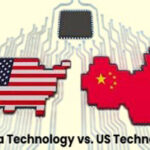Education plays a crucial role in shaping a nation’s future, and both China and the United States have developed distinct systems to cultivate talent, innovation, and workforce readiness. While China emphasizes discipline, rigorous testing, and state-driven education policies, the US prioritizes creativity, critical thinking, and a more decentralized approach. This article compares the two systems in terms of structure, teaching methods, academic performance, and challenges.
1. Structure of Education Systems
China’s Education System
China follows a **centralized, exam-driven model** heavily influenced by government policies. The system is divided into:
– **Primary School (6 years)** – Focuses on core subjects (Chinese, Math, Science).
– **Middle School (3 years)** – Prepares students for the high school entrance exam.
– **High School (3 years)** – Leads to the **Gaokao (National College Entrance Exam)**, which determines university admissions.
– **Higher Education** – Prestigious universities (e.g., Tsinghua, Peking University) prioritize STEM fields.
The government controls curricula, textbooks, and teaching standards nationwide, ensuring uniformity.
US Education System
The US has a **decentralized system**, with states and local districts setting their own standards. The structure includes:
– **Elementary School (K-5)** – Broad curriculum with arts and physical education.
– **Middle School (6-8)** – Introduces more specialized subjects.
– **High School (9-12)** – Students choose electives and prepare for **SAT/ACT** for college admissions.
– **Higher Education** – The US boasts top-ranked universities (Harvard, MIT, Stanford) that emphasize liberal arts, research, and innovation.
Unlike China, the US allows more flexibility in course selection and teaching methods.
2. Teaching Methods and Learning Styles
China: Discipline and Memorization
– **Teacher-centered approach** – Instructors lead lectures, and students follow structured lessons.
– **High emphasis on rote learning** – Success depends on memorization for standardized tests.
– **Long study hours** – Students often attend extra classes (evenings/weekends) to prepare for exams.
– **Strict discipline** – Classroom behavior is highly regulated, with less focus on creativity.
US: Creativity and Critical Thinking
– **Student-centered learning** – Encourages discussions, projects, and independent thinking.
– **Flexible curriculum** – Students choose electives (arts, coding, vocational courses).
Programs in the humanities and STEM fields place a strong emphasis on innovation and problem-solving.
– **Extracurricular activities** – Sports, clubs, and community service are integral to education.
**Key Difference:** China excels in producing high test scores, while the US fosters creativity and adaptability.
3. Academic Performance and Global Rankings
China’s Strengths
– **PISA (Program for International Student Assessment) Rankings** – Chinese students (especially from Shanghai, Beijing) consistently rank **#1 in Math, Science, and Reading**.
– **Strong STEM focus** – Produces top engineers, programmers, and scientists.
**High level of competition at the university** One of the most difficult tests in the world is the Gaokao.
US Strengths
– **Leading in university rankings** – US institutions dominate **QS and Times Higher Education rankings**.
**Verdict:** China leads in K-12 test scores, while the US dominates higher education and research.
4. Challenges in Both Systems
China’s Challenges
– **Extreme academic pressure** – High suicide rates among students due to Gaokao stress.
– **Lack of creativity** – Rote learning stifles innovation and independent thinking.
**Inequality in education** – Rural schools are underfunded in comparison to top metropolitan schools.
US Challenges
– **Declining math/science rankings** – US students lag behind China in STEM performance.
– **High tuition costs** – Student debt crisis makes college unaffordable for many.
– **Unequal funding** – Poor districts have underfunded schools, widening the achievement gap.
5. Future Trends
China’s Reforms
– Reducing Gaokao pressure by introducing **broader assessment criteria**.
US Reforms
– Expanding **STEM education** to compete globally.
– Addressing **student debt** through policy changes and free community college initiatives.
Which System is Better?
– **China’s system** produces highly disciplined, technically skilled graduates but struggles with creativity and mental health issues.
– **The US system** fosters innovation and critical thinking but faces inequality and inconsistent K-12 performance.
Final Verdict:
– If the goal is **high test scores and technical expertise**, China’s model is effective.
– If the priority is **creativity, leadership, and research**, the US system excels.
The ideal future may involve a **hybrid approach**—combining China’s rigor with America’s emphasis on innovation.


